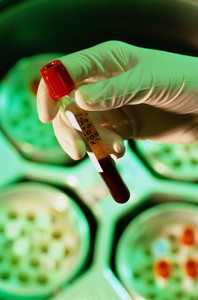To what extent is the existing framework for biosimilars in Europe likely to be applicable to monoclonal antibodies (mAbs)? This question was verified in a paper by Dr Christian Schneider –member of the EMA’s Committee for Medicinal products for Human Use (CHMP), Chairman of EMA’s Biological Medicines Working Party (BMWP) and the Paul-Ehrlich-Institut in Langen, Germany– and Dr Ulrich Kalinke of the Paul-Ehrlich-Institut and Twincore Center for Experimental and Clinical Infection Research in Hannover, Germany, as published in Nature Biotechnology of September 2008.
Will the EU biosimilars pathway be applicable to monoclonal antibodies?
Biosimilars/Research
|
Posted 08/03/2010
 0
Post your comment
0
Post your comment

Dr Schneider and Dr Kalinke argued that it remains to be seen whether the development of a biosimilar mAb is possible and feasible, but as analytical methodology becomes increasingly sophisticated, it is more and more likely that companies will consider a biosimilar development programme for antibodies for the EU. They stressed it should be stated, however, that compared with the development of generic pharmaceuticals, barriers to entry for biosimilar development are likely to be much higher because of the need for state-of-the-art technology, which is both expensive and cumbersome. According to them, some of the expense might be offset by reduction in development costs with a reduced nonclinical and clinical programme, but such decisions should be extensively discussed and agreed to a priori with regulators on a case-by-case basis. They would recommend that companies intending to develop biosimilar mAbs seek regulatory scientific advice in the EU early in the process. The redefinition of the EMA Scientific Advice Procedure could provide useful feedback to developers of biotechnological products, allowing repetitive requests for scientific advice during development.
As comparative trials to establish similarity of efficacy and safety can require a large number of patients, Dr Schneider and Dr Kalinke stated it might well turn out for certain mAbs that the biosimilar approach is simply not feasible. From an innovation perspective, as most of the current patents expirations concern murine or chimaeric antibodies that have often been associated with immunogenicity issues in the clinic, the development of biosimilar mAbs does not seem to be advisable. In such cases, the development of newer antibody formats that facilitate the development of improved (or second-generation) mAbs might be more desirable. Even so, developments showed that biosimilar mAbs were not purely hypothetical. For example, in 2007 the Indian firm Dr Reddy’s Laboratories launched Reditux, a copy-cat version of Genentech’s cancer drug Rituxan (rituximab) and ISU Abxis in South Korea licensed Clotinab, a copy of abciximab (ReoPro). Although no further information was available on the development programme for these products to confirm that they were comparable to biosimilars as defined by the EU regulatory framework, more companies announced plans to approach markets like the EU and US.
The authors concluded that with biosimilar mAbs already on the horizon, it behoves regulators to initiate thoughts and discussions on how to tackle the challenges of their development. Dr Schneider will present the first report on the upcoming EMA biosimilar mAbs guideline at the IABS-PEI-IFPMA conference “Taking immunogenicity assessment of therapeutic proteins to the next level” on 10–11 June 2010 at the Paul-Ehrlich-Institut in Langen, Germany.
Reference:
Christian K Schneider and Ulrich Kalinke. Toward biosimilar monoclonal antibodies. Nature Biotechnology 26:9, 985-90 (2008).
Source: Nature Biotechnology
General
Samsung Bioepis wins Pyzchiva case; Regeneron patent rulings threaten foreign biosimilars
Chinese biosimilars go global: growth, partnerships, and challenges
What is the future for the US biosimilar interchangeability designation

Biosimilars/Research Posted 05/06/2025
Biosimilar clinical efficacy studies: are they still necessary?

Biosimilars/Research Posted 27/05/2025
The best selling biotechnology drugs of 2008: the next biosimilars targets








Post your comment